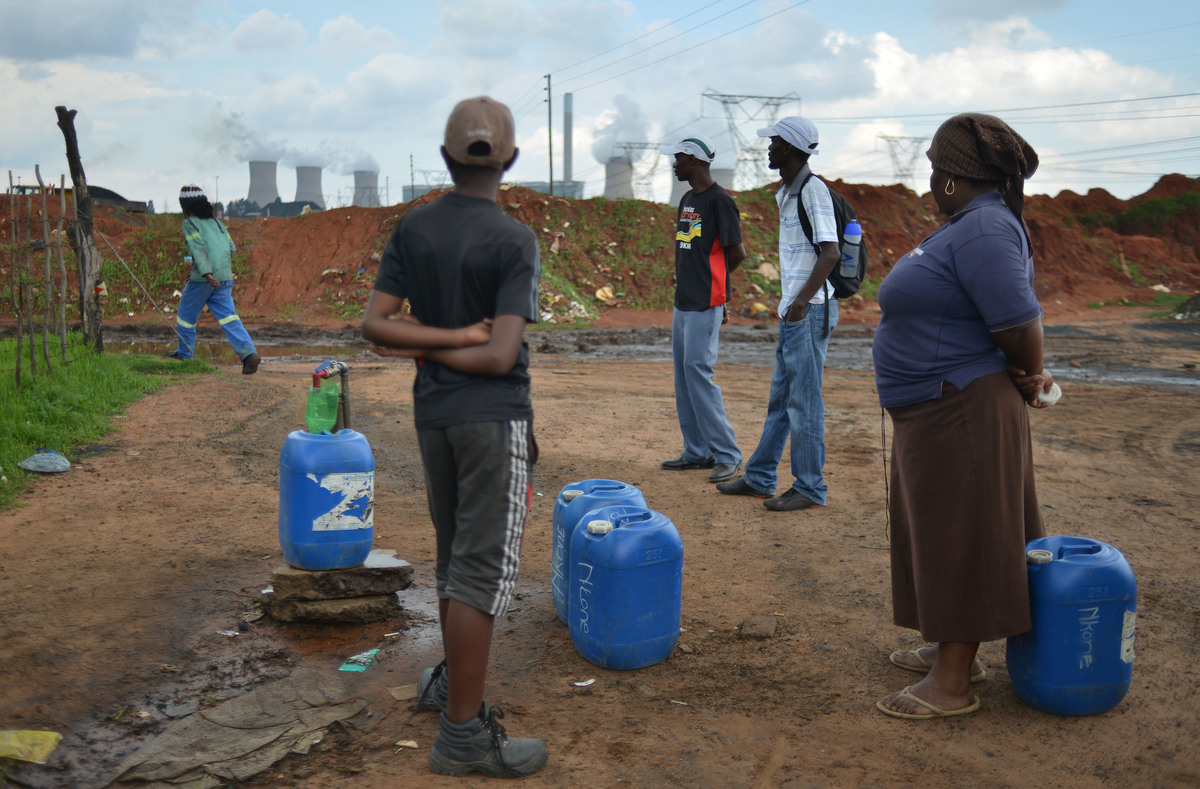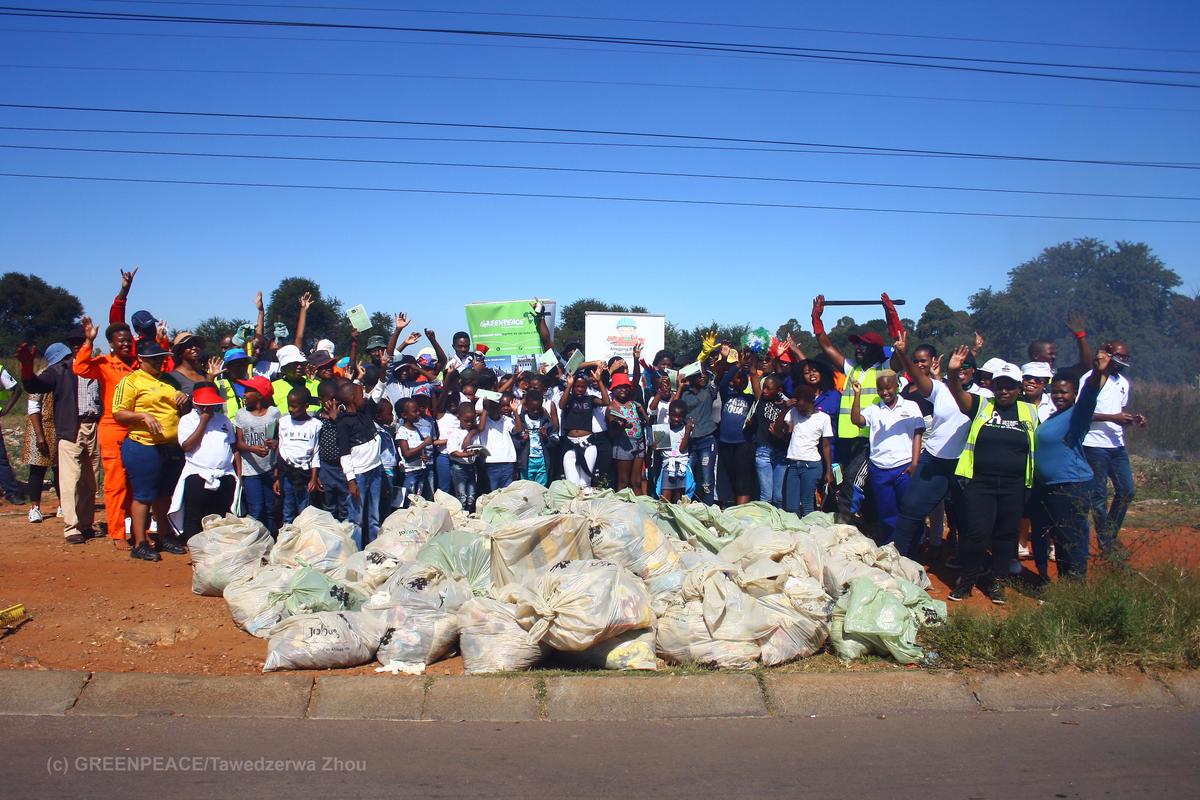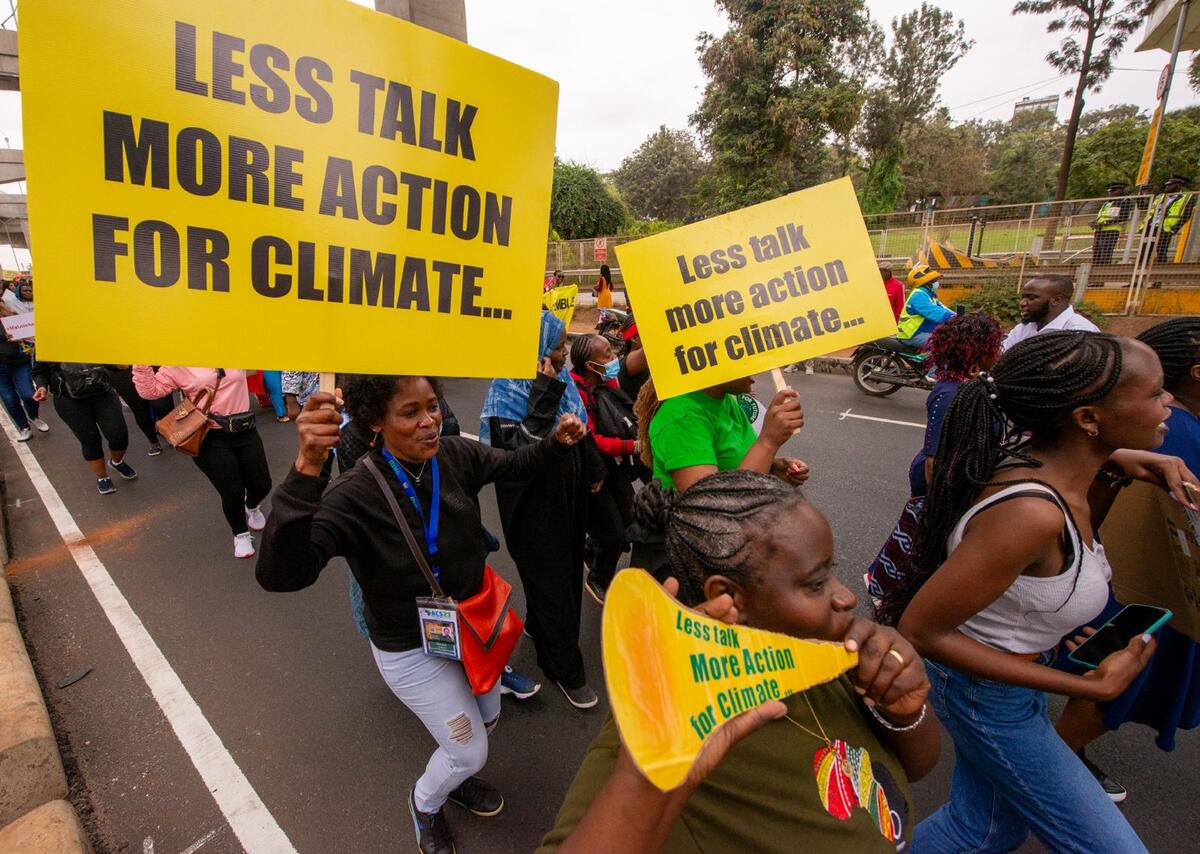The Water Crisis in South Africa: A Looming Threat

Community members wait to collect water at a community tap for their household use. Many people are forced to buy bottled water for drinking purposes because there are concerns about the quality of the tap water.
Labeling the current water situation in South Africa as anything other than a crisis would be to downplay the severity of the problem.
South Africa is already a water-scarce nation receiving insufficient and unreliable rainfall. The country receives a mean annual precipitation of 497mm/year, almost 50% less than the global average of 860mm/year.
This water scarcity also presents in the way water resources are distributed in the country.
Water is a very unevenly distributed resource meaning that millions of South Africans already drink water that was captured in reservoirs in excess of 400km away.
The country and its government try to solve this water insecurity problem by engineering dams and ‘importing’ water through inter-basin transfer schemes.
This means that the looming water emergency should be considered a key issue as without water a large section of South African society would be at risk.
The term “water crisis” is often used to describe the lack of water access throughout the world and the resulting consequences.
South Africa’s Unique Water Scarcity Issue
A worker pauses beside mountains of coal at a coal washing plant, near MNS informal settlement. Coal has to be washed after being mined before it can be used. The leftover water is often toxic. Water pollution from coal is a serious problem in South Africa, and the country faces a deepening water scarcity crisis.
The National Development Plan (NDP) has clear, defined milestones to achieve its 2030 objectives. Some of the milestones include:
- Ensuring that all South Africans have access to clean running water in their homes.
- Realising a food trade surplus, with one-third produced by small-scale farmers or households.
- Ensuring household food and nutrition security.
None of these goals will be met without secure access to water.
This water insecurity risk is being exacerbated by increasing climate change impacts whose main driver remains to be electricity by fossil fuels.
Coal plants require direct use of water at every step of their supply chain. From the extraction and preparation of coal from mines, its incineration at a coal-fired power station, the measures taken to control dust and pollution at both mines and power stations, and the disposal of the coal combustion by-products.
Currently, 19 percent of the rural population lacks access to a reliable water supply and 33 percent do not have basic sanitation services. While rural citizens suffer the most, over 26 percent of all schools (urban or rural), and 45 percent of clinics, have no water access either.
This lack of access to clean water across South Africa will result in many difficulties including issues with health, education, gender equity, and economic development.
The water risk is also likely to result in a number of socio-political events that could well destabilize the local, provincial or national government. Such events could include:
- Civil unrest and instability: Water stress can spark civil unrest over water availability and quality or government water management practices.
- Water stress can lead to emergence of a “black market” for water: In Zimbabwe and Kenya, a black market for water has emerged in part due to government failure to extend water infrastructure into poor areas. These water black markets are unregulated, leaving vendors open to selling contaminated water and increasing the cost of water at their will.
- When mechanisms for resolving water conflict at the local level break down, disputes over water can turn violent. Prominent examples of localized conflicts are those between herding communities clashing violently with local farming communities over land. Localized violence has the potential to escalate internationally if water resources are shared across state borders.
This imbalance in the population-water resources equation has adverse impacts on domestic hygiene, public health, and cost of domestic water.
On the social side, water scarcity adversely impacts job opportunities, farm incomes, credibility and reliability of agricultural exports, and the ability of the vulnerable to meet the cost of domestic water.
Economically, the adverse impact is displayed in the loss of production of goods, especially agricultural goods, the loss of working hours because of the hardships society faces as a result of water scarcity.
Water Risk In A Changing Climate
A Greenpeace activist dressed as an elephant holds a sign reading “Water hole dried-up, need new home” in an action to draw attention to the climate crisis in Africa.
The impacts of climate change are being felt increasingly all over South Africa and water is the key medium through which these impacts unfold.
The Food and Agriculture Organisation of the United Nations (FAO) estimates that in 2025, 1.8 billion people will be living in countries with absolute water scarcity, and two-thirds of the world’s population could be living in water-stressed conditions.
Local communities in Africa, where people already lack access to safe drinking water are finding it hard to cope with water stress resulting from climatic stresses.
How Is Climate Change Causing The Water Crisis
Locals queue to collect water at Brewery Spring in Rondebosch, Cape Town
1. Shifting Precipitation Patterns
Water is life. The sustainability of human development depends on water, whether it is in rivers, lakes or in the form of rainfall, since water is essential for all living ecosystems.
Climate change is already directly impacting rainfall, and thus, water supplies, in several key ways.
Climate change is exacerbating this water shortage through more erratic rainfall. This is particularly worrying as precipitation levels are one of the key climatic drivers that determine water availability at a particular location.
Shifting precipitation patterns may cause arid regions to suffer more frequent and intense droughts. This situation has the potential to compound the complications created by the other.
The problem of access to drinking water is especially prominent in South Africa, where most of the population does not have access to safe water facilities. This access is even lower in rural areas and among disadvantaged socio-economic groups.
Although disparities in access to safe drinking water vary across the countries, in all contexts, they present a barrier to achieving universal safe-water access.
The lack of access to safe drinking water is a human right problem whose urgency needs to be addressed.
2. Average Temperature Increases
Water is a renewable resource, made continuously available through solar energy, which enables it to evaporate from oceans and land and be thus redistributed around the world.
This water runs off in rivers and refills our aquifers. This water then returns to the oceans as river and groundwater runoff. This is known as the Water Cycle.
Globally warming temperatures will threaten these key sources of freshwater: snowpack and mountain glaciers. The gradual, seasonally predictable melting of high-altitude snow and ice
provides the water upon which billions of people rely for drinking, plumbing, and agriculture as the runoff recharges local and regional reservoirs.
Also, national freshwater demand is expected to increase. In a world where freshwater demand is projected to outpace recharge rates and gross supply due to a dwindling snowpack, populations will have to face dire consequences resulting from a shortage of fresh water.
3. Increased Severity of Drought
Constant drought periods are painting a troubling picture for South Africa in terms of water access.
There are demonstrated increases in the intensity, duration, and spatial extent of droughts as a result of higher temperatures, warmer sea surface temperatures, changes in precipitation patterns, and diminishing glaciers and snowpack.
The severity and frequency of these droughts lead to a water deficit issue.
Non-Climatic Causes Of The Water Crisis
A Greenpeace employee takes a water sample next to the MNS Informal Settlement in Mpumalanga. The water is approximately 500 meters from the shacks (tin houses) of the settlement. The water from the washing station flows into a pond from which the community members sometimes collect water for households use. The mines claim that the water is purified and drinkable while it is not. Visible particles of metal and coal swim around in the water. People in the community now have to spend their limited income on bottled drinking water.
Human activities also play a pivotal role in present-day water-related risks.
- The poor state of certain water-related municipal infrastructure due to lack of or no maintenance and investment by certain municipalities has resulted in water “losses” as well as decreased overall water quality levels at source (dams etc.)
- Pollution of water sources caused by coal mining, which poses a serious pollution threat, both to groundwater and surrounding surface water as well as by fracking.
- Limited focus on water efficiency and management.
- Insufficient investment in infrastructure, including bulk water supply programs, maintenance of existing infrastructure, and efficiency/recycling initiatives.
- Lack of planning for future requirements, especially in cities with populations.
- Water demands that exceed available raw water allocation.
What Are The Consequences Of This Water Scarcity Risk?
Dwindling water supplies at Theewaterskloof Dam, an earth-fill type dam located on the Sonderend River near Villiersdorp, Western Cape, South Africa, around 100km east of Cape Town.
Indeed, climate-related impacts on water resources are already being documented, causing real and imminent risks to human life.
1. Low agricultural outputs
Smallholder farmers are particularly vulnerable to climate change impacts on precipitation, especially increases in the irregularity of rainfall.
Their existing coping responses and strategies are likely to prove inadequate to deal with major shifts in rainfall timing and volumes.
This then leads to a situation where food security for billions is threatened. Water has a huge impact on food production. These challenges have been exacerbated by climate change. Climate change will make extreme weather events, such as drought, more frequent and intense, and less predictable, as time goes by. This will lead to less predictable access to water for agriculture and food production in many parts of South Africa.
The climate crisis must be addressed now before critical tipping points for rain-fed agriculture induced by heat stress and water shortages have been reached.
2. Water scarcity will increase water prices
Greenpeace Africa Defend Water Campaign in Johannesburg. Graffiti on the streets of Johannesburg, highlight water as a human right.
Inadequate water management and distribution is driving shifts toward making water even more expensive through full-cost pricing policies with the aim of incentivising users to use water more efficiently, a situation that is affecting the poorest and most vulnerable in our society.
This is consistent with ill-advised measures from the government that prioritize mining and other water-heavy industrial processes over the individual’s right to have water access at all times.
3. Increasing poverty and inequality
A man near a water pipe in Johannesburg. South Africa is a water-stressed country, with an impending water crisis. The national utility Eskom prioritizes coal meaning that local communities, already struggling for access to water, may lose their water rights to make way for mines.
Access to water can break the cycle of poverty. How does access to safe water reduce poverty?
Lack of safe water and poverty are mutually reinforcing; access to consistent sources of clean water is crucial to poverty reduction.
Time spent gathering water or seeking safe sanitation accounts for a lot of lost economic opportunities. Access to safe water and sanitation at home turns time spent into time saved, giving families more time to pursue education and work opportunities that will help them break the cycle of poverty.
Without clean water, you can’t stay healthy. If you can’t stay healthy, you can’t go to work or school. You can’t build a home. You can’t grow food, and you can’t provide for your family.
4. Gender Inequality
Women are disproportionately affected by the water crisis, as they are often responsible for collecting water. This takes time away from work, school, and caring for the family. The lack of water and sanitation locks women in a cycle of poverty.
Empowering women is critical to solving the water crisis. When women have access to safe water at home, they can pursue more beyond water collection and their traditional roles. They have time to work and add to their household income.
5. Water supply shortages could cause potential loss of electricity generation capacity
Woefully underappreciated, is the fact that water and energy oftentimes compete with one another.
South Africans consume vast amounts of water to generate energy, and we consume vast amounts of energy to extract, process, and deliver clean water.
With increasing frequency, we value energy production over water protection.
This collision between energy and water – combined with the urgent need to reduce our global carbon footprint is constantly manifesting.
These competing issues are intertwined in for example one way: the electric power industry uses vast amounts of water overall, but there are wide disparities in water usage between different types of power production.
For example, renewable energy sources such as wind and solar typically use low amounts of water compared to coal, and biofuels.
Hydropower plants are also at increased risk due to decreases or changes in water flow caused by climate change. Hydropower generation is likely to be most directly affected by climate change because it is sensitive to the amount, timing, and geographical pattern of precipitation and temperature.
6. Human suffering and a loss of dignity
Locals queue for water at Newlands Spring in Newlands, Cape Town.
Tragically, South Africa’s poorest communities will likely suffer the most from these impacts as access to sanitation and food security will be directly impacted.
A great example is Capetown’s Day Zero which was an indicator of South Africa’s water crisis back in 2018.
The day was set for 12th April 2018 when the water supply to Cape Town’s residents was to be cut off due to the severe drought that the Western Cape Province in South Africa was going through.
7. Deteriorating water quality in river catchments and aquifers
Water security is more than a quantity issue; it considers quality. Is the water clean, fresh, and drinkable?
Not every South African has access to the same amount of water, quality of water, or infrastructure for water. There’s a difference in water accessibility among the population.
Declining water quality is an acute problem, particularly where there’s a lack of adequate wastewater treatment. In many places, waterways traditionally used for drinking water or other community needs have been heavily contaminated.
This lack of adequate and clean water is the key reason why up to five million people die each year from water-related illnesses.
8. Children and education crisis
A woman and her son wash their clothes at a communal tap at Plot 8 informal settlement in Roodepoort on Johannesburg’s West Rand.
Children are often responsible for collecting water for their families. This takes time away from school and play.
Access to safe water and sanitation changes this.
Reductions in time spent collecting water have been found to increase school attendance, especially for girls. Access to safe water gives children time to play and the opportunity for a bright future.
How to mitigate this water scarcity risk
- Wastewater management (including treatment and recycling of sewage and other wastewater.)
- Given that the high recurrence rate of these phenomena in the region is likely to be exacerbated by climate change, one-off measures (such as the water restrictions imposed on Cape Town’s residents) should be combined with more structural measures in the medium to long term in order to cope with and mitigate the consequences on the most vulnerable populations.
- A move from coal to renewable energy.
In Conclusion
Greenpeace Africa Defend Water Campaign in Johannesburg. Graffiti on the streets of Johannesburg, highlight water as a human right.
The implications for the depletion of the global water supply include diminishing food supplies, human misery and famine. And yet, the emerging water scarcity crisis goes easily unacknowledged.
Water scarcity is one of the most significant environmental issues of our time. Thus, an urgent need exists to develop effective adaptation strategies for coping with this crisis.
The problem of the emerging water scarcity crisis is a local, national, and global problem. In South Africa, water is scarce and we need to play our role to ensure that the right to water is met.
The realisation of the right to water is indispensable to the realization of many other internationally recognized human rights, including the right to food, the right to health, and the right to adequate housing.
Greenpeace Africa is urgently calling for a revisit of how we prioritize our environmental risks in South Africa. That includes water. We’re calling upon you to support our efforts in protecting our water sources, combating the effects of climate change on water shortages, and ensuring access to water for all.



